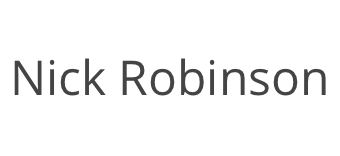Self-Awareness – A Primer
Self-Awareness is the best start for leadership development. But how do you get that? What should you look for; and how?
The ancient Greeks had the phrase “Know thyself” chiselled on the doorway to the temple of Apollo at Delphi. Real knowledge, insight and understanding about important events and people in the world around them wasn’t possible they reckoned, without first having the foundation of self-knowledge.
If that’s still true today, how do you actually go about getting self-awareness? What should you look for; and how do you do it?
I think there’s perhaps three or more important areas to consider and I’ve set out some of those below. These are often used as early as the second or third phase in my coaching approach, as they’re so fundamental to the development work we need to do after that.
This is a fairly long post for me, over 1,200 words, because I wanted to give you a rounded sense of where to be looking, what to be listening for and how it feels to be embarking, in a structured way, on this kind of self-knowledge work. What I’ve written here isn’t the only way to go about it, and even at over 1,200 words this is still only a very quick jog around the park. Anyway, I hope you find it helpful in some way.
1. Your Values
These are the things that, at the moment at least, are intrinsically important to you. They can or might change over time or in a different context. Some may be more important than others, and that also can be fluid but, most of the time, they’re fairly consistent. Here’s my own top 5 Values:
- Making a difference / Usefulness / Legacy
- Excellence / Strive to be the best / Learn-Apply
- Congruence / Authenticity / Be true to yourself
- Independence / Self-reliance / Go do it
- Balance / Harmony / Wholeness
Note that these are in ‘strings’ of words, separated by “/” because often one word by itself isn’t enough to capture everything about a particular value.
A simple way to start to uncover your own values would be to remember a time, at work or at home, when things felt like they were going great, or just right, or were especially poignant in some way. What were the circumstances of that time? What was going on around you, who was present, how did you feel?
The chances are that during that time several of your values were being quite strongly upheld. People can often begin to identify those values by reflecting on that time and getting curious about what made it so great for them.
2. Your Thought Patterns
This is about how your (mostly unconscious) mind filters out what is useful information and what isn’t and how it then represents that information, so that you can make sense of the world around you.
Since this process happens very fast and mostly unconsciously, one of the best ways to uncover your own patterns is by way of a kind of compare and contrast with other people. Look at the way they do things, and see how it compares with your own way.
Here are two examples of the kinds of things to consider:
- Are you motivated into action more by (a) the chance to achieve a goal; or (b) the need to solve or avoid a problem?
- Do you prefer (a) to have lots of choice and variety, creating different possibilities in the way you go about things, or (b) do you prefer to stick to a tried and tested process?
Another important pattern became obvious to me when I got a new Satnav. My old one used to show me a map of my whole route when it had finished plotting. Only after you’d seen that ‘big picture’ screen, did it let you start navigating. But my new satnav didn’t give you that overview. Once it’d plotted a route, it just went straight to “Turn left”. I really found it difficult to trust the new satnav and would often ask my wife to just check the ‘big picture’ of the route in our tatty old road atlas, which she hated doing. Turns out, I’ve got a strong preference for thinking in big picture terms and, until I’ve done that, it’s really hard for me to get into the detail, even though I’ve trained myself (I’m an ex-accountant!) to work with detail. And my wife is the opposite, she’s fascinated by the detail, so she hated being asked to check the big picture of the route.
Again, these factors are not immutable, they can change and be changed. It’s important to not ‘adopt’ them as fixed determinants and to not use them to pigeonhole yourself or others, or to excuse bad behaviour.
It’s possible, although I don’t think it’s often that necessary, to go through about 20 or so of those key patterns as part of the coaching process in in easy conversational way with me. I don’t often do that, because I’d rather people take responsibility for their own self-knowledge than have me or some anonymous psychometric test do it for them.
As well as the kind of thought patterns I’ve described here, you could also look at key aspects of personality, such as introversion or extraversion. The important thing is to just look, listen, feel and think your way a little more consciously than normal really. The psychologist Carl Jung said “Until you make the unconscious conscious, it will direct your life and you will call it fate.”
3. Your Fears, Doubts and Limiting Beliefs
What holds you back? What doubts do you have about yourself, your abilities, the kind of person you are, the way others might see you?
What things are you so unconsciously afraid of, that you’ll automatically come out fighting, even when that isn’t the best way to do things?
In what way do you sell yourself short? Or sabotage your own efforts?
What unwritten rules have you made up about how you have to “be” (e.g. a favourite of mine: “I have to be strong”)?
What shame or hurt are you carrying around about past experiences that made you feel inadequate?
I love working with fears, doubts and limiting beliefs because I see them not as ‘bad’ things, but as really useful data about what’s important to people and about how they might really shine, if they want to.
If you’re ready now to start uncovering some of your own possible fears, doubts and limiting beliefs, try completing some of the sentences below. Do it fast and without too much conscious thought:
I’m often too …………………
I need to be more …………………
I can’t seem to …………………
I should stop (or start) …………………
I mustn’t keep …………………
I shouldn’t always …………………
I must be less …………………
Every time I try to do ………….……., ……………. happens
I want to …………………, but that’s just the way things are
I don’t deserve to …………………
I ought to …………………
If you find anything at all, start celebrating, because that just might be the bit of self-knowledge that opens all the other doors. And if completing the sentences didn’t uncover anything for you, just try going back to those questions I’ve posed at the start of section 3 above and become curious about how any of those might apply to you.
After working through those three key areas, the next level of self-knowledge is to get really clear about what’s even more important to you than your patterns of thinking and your doubts and fears and about how you might apply your values to your life and your work.

